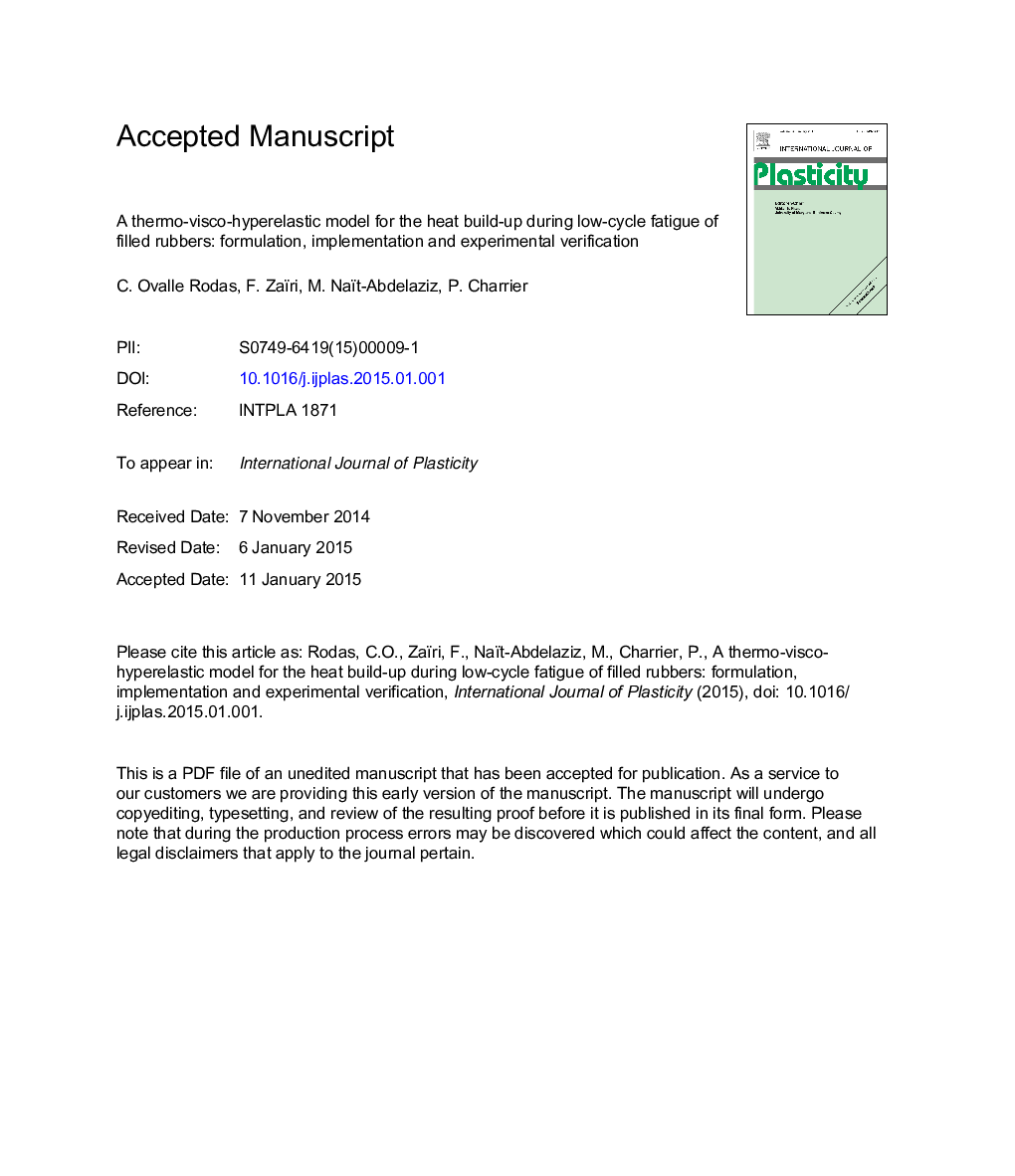| Article ID | Journal | Published Year | Pages | File Type |
|---|---|---|---|---|
| 7174916 | International Journal of Plasticity | 2016 | 30 Pages |
Abstract
In a previous contribution (Ovalle Rodas et al., 2014), a finite strain thermo-visco-elastic constitutive model, in accordance with the second thermodynamics principle, has been developed to predict the heat build-up field in rubbers during low-cycle fatigue. Using a viscous dilatation tensor, related to the time-dependent response of the rubber material, as an internal variable of the specific free energy potential, both the mechanical behavior and the heat build-up have been predicted for different strain rates and stretches. In the present contribution, the finite strain thermo-mechanical constitutive model is extended by using a stretch amplification factor to account for the effect of carbon-black filler on the heat build-up. Experimental observations on the mechanical response and the heat build-up during fatigue tests of carbon-black filled styrene-butadiene rubber (SBR) containing different filler contents are reported at room temperature. The increasing effect of the filler content on the heat build-up is evidenced. The proposed constitutive model is implemented into a finite element code and the same thermo-mechanical boundary conditions regarding the experimental tests are simulated. The model parameters are identified using experimental data issued from SBR filled with a given carbon-black content under a given strain rate and different stretches. Predicted evolutions given by the proposed constitutive model for other strain rates and amounts of carbon-black are found in good agreement with the experimental data.
Keywords
Related Topics
Physical Sciences and Engineering
Engineering
Mechanical Engineering
Authors
C. Ovalle Rodas, F. Zaïri, M. Naït-Abdelaziz, P. Charrier,
